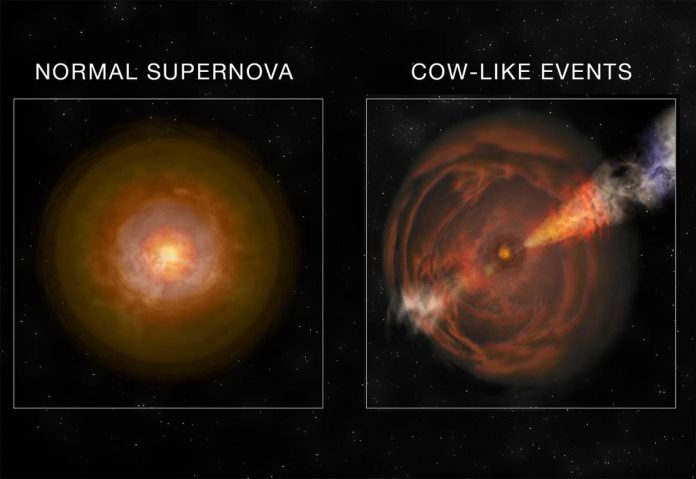Another member of the “Cow” class of supernova explosions has been discovered. The new event, named AT2020mrf is the 5th found of the Cow class of supernovae. This group has been named after the first supernova which is AT2018cow.
New investigation has found out active black holes or neutron stars in these unusual stellar explosions.
A massive star explodes and eaves behind either a black hole or a dead stellar remnant called a neutron star. These stellar remnants are relatively inactive and shrouded by material ejected in the explosion. But new research said, Cow-like events have at their cores compact objects that emit high-energy X-ray emission.
AT2018cow was the first Cow event and it had shocked astronomers when it was discovered. The explosion was 10 times brighter in visible light than typical supernovae and faded more quickly. It also gave off a large amount of highly variable X-rays. Astronomers believed that they were directly witnessing the birth of a black hole or neutron star for the first time.
Cows also throw off heaps of mass before they explode. This gets illuminated later. At the time the stars blow up, they create shock waves that will plow through the pre-existing material. This causes them to glow in radio and millimetre-wavelength light.
AT2020mrf was found in X-rays rather than optical light. Scientists have spotted it in July 2020 using X-ray data from the Russian German Spektrum-Roentgen-Gamma (SRG) telescope. They have also checked observations taken in optical light by the Zwicky Transient Facility (ZTF). Scientists found out that ZTF had also spotted the event.
SRG data revealed that the explosion shined with 20 times more X-ray light than the original Cow event. NASA’s Chandra X-Ray Observatory has also showed that the explosion was not only still sizzling but shining with 200 times more X-ray light.
Scientists said that a “central engine” within the supernova debris must be powering the ongoing X-ray radiation.

